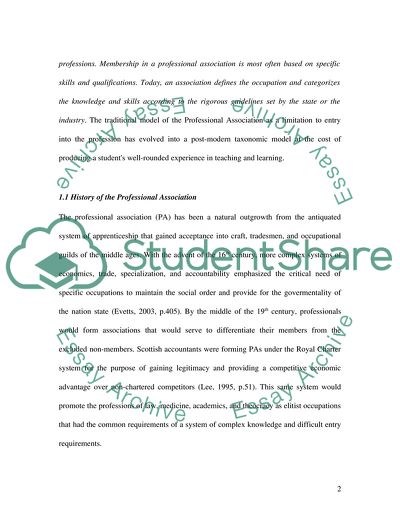Cite this document
(“The Concepts of Professional and Professionalism Essay”, n.d.)
The Concepts of Professional and Professionalism Essay. Retrieved from https://studentshare.org/education/1714514-professional-associations-are-often-more-interested-in-controlling-entry-into-occupations-than-ensuring-that-their-students-receive-a-well-rounded-experience
The Concepts of Professional and Professionalism Essay. Retrieved from https://studentshare.org/education/1714514-professional-associations-are-often-more-interested-in-controlling-entry-into-occupations-than-ensuring-that-their-students-receive-a-well-rounded-experience
(The Concepts of Professional and Professionalism Essay)
The Concepts of Professional and Professionalism Essay. https://studentshare.org/education/1714514-professional-associations-are-often-more-interested-in-controlling-entry-into-occupations-than-ensuring-that-their-students-receive-a-well-rounded-experience.
The Concepts of Professional and Professionalism Essay. https://studentshare.org/education/1714514-professional-associations-are-often-more-interested-in-controlling-entry-into-occupations-than-ensuring-that-their-students-receive-a-well-rounded-experience.
“The Concepts of Professional and Professionalism Essay”, n.d. https://studentshare.org/education/1714514-professional-associations-are-often-more-interested-in-controlling-entry-into-occupations-than-ensuring-that-their-students-receive-a-well-rounded-experience.


